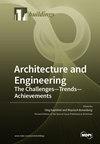含有回收轮胎钢纤维的轻质自密实混凝土的性能
IF 3.1
3区 工程技术
Q2 CONSTRUCTION & BUILDING TECHNOLOGY
引用次数: 0
摘要
近年来,再生材料在混凝土技术中的应用受到了广泛关注,促进了可持续发展和资源保护。本文研究了含有回收轮胎钢纤维(RTSFs)的轻质自密实混凝土(LWSCC)的性能。评估了 RTSF 对复合材料流动性及其密度的影响。对所开发材料的机械性能进行了检查,并进行了梁试验,旨在评估其在结构应用中的可行性。通过测定抗压强度和抗拉强度来评估所开发混凝土混合物的机械性能。梁试验用于评估梁试件的抗弯行为。本研究采用了三种不同的钢纤维含量,分别为混凝土体积分数的 0%、0.5% 和 1%。测试结果表明,加入纤维不会对 LWSCC 混合物的流动性和密度产生负面影响。此外,RTSF 的使用还提高了所开发混凝土混合物的抗拉强度,其中纤维混凝土的劈裂抗拉强度比非纤维混凝土提高了 38% 到 76%。另一方面,混合物的抗压强度没有受到影响。使用 RTSF 的试验梁在延迟和控制开裂、提高极限荷载和增加延展性等方面的抗弯性能都有所改善。与对照组无纤维梁相比,开裂荷载、极限荷载和延性指数分别增加了 63.8%、9.3% 和 16%。梁的试验结果与理论预测结果进行了比较,结果表明两者吻合良好。本文章由计算机程序翻译,如有差异,请以英文原文为准。
Behavior of Lightweight Self-Compacting Concrete with Recycled Tire Steel Fibers
The utilization of recycled materials in concrete technology has gained significant attention in recent years, promoting sustainability and resource conservation. This paper investigates the behavior of lightweight self-compacting concrete (LWSCC) with recycled tire steel fibers (RTSFs). The effects of RTSFs on the flowability of the composite material and its density were assessed. The mechanical properties of the developed material were examined and beam tests were performed, aiming to assess its feasibility for structural applications. The compressive and tensile strengths were determined to evaluate the mechanical properties of the developed concrete mixtures. The beam tests were conducted to assess the flexural behavior of the beam specimens. Three different steel fiber contents of 0, 0.5, and 1% volumetric fractions of concrete were used in this study. The test results indicate that incorporating the fibers did not negatively impact the flowability and density of the LWSCC mixtures. In addition, the use of RTSFs enhanced the tensile strength of the developed concrete mixtures, where fibrous concrete showed increases in the splitting tensile strength in the range of 38 to 76% over that of non-fibrous concrete. On the other hand, the compressive strength of the mixtures was not affected. The test beams with RTSFs exhibited improved flexural performance in terms of delaying and controlling cracking, enhancing ultimate load, and increasing ductility. Compared with the control non-fibrous beam, the increases in the cracking load, ultimate load, and ductility index were up to 63.8, 9.3, and 16%, respectively. The test results of the beams were compared with theoretical predictions, and good agreement was found.
求助全文
通过发布文献求助,成功后即可免费获取论文全文。
去求助
来源期刊

Buildings
Multiple-
CiteScore
3.40
自引率
26.30%
发文量
1883
审稿时长
11 weeks
期刊介绍:
BUILDINGS content is primarily staff-written and submitted information is evaluated by the editors for its value to the audience. Such information may be used in articles with appropriate attribution to the source. The editorial staff considers information on the following topics: -Issues directed at building owners and facility managers in North America -Issues relevant to existing buildings, including retrofits, maintenance and modernization -Solution-based content, such as tips and tricks -New construction but only with an eye to issues involving maintenance and operation We generally do not review the following topics because these are not relevant to our readers: -Information on the residential market with the exception of multifamily buildings -International news unrelated to the North American market -Real estate market updates or construction updates
 求助内容:
求助内容: 应助结果提醒方式:
应助结果提醒方式:


